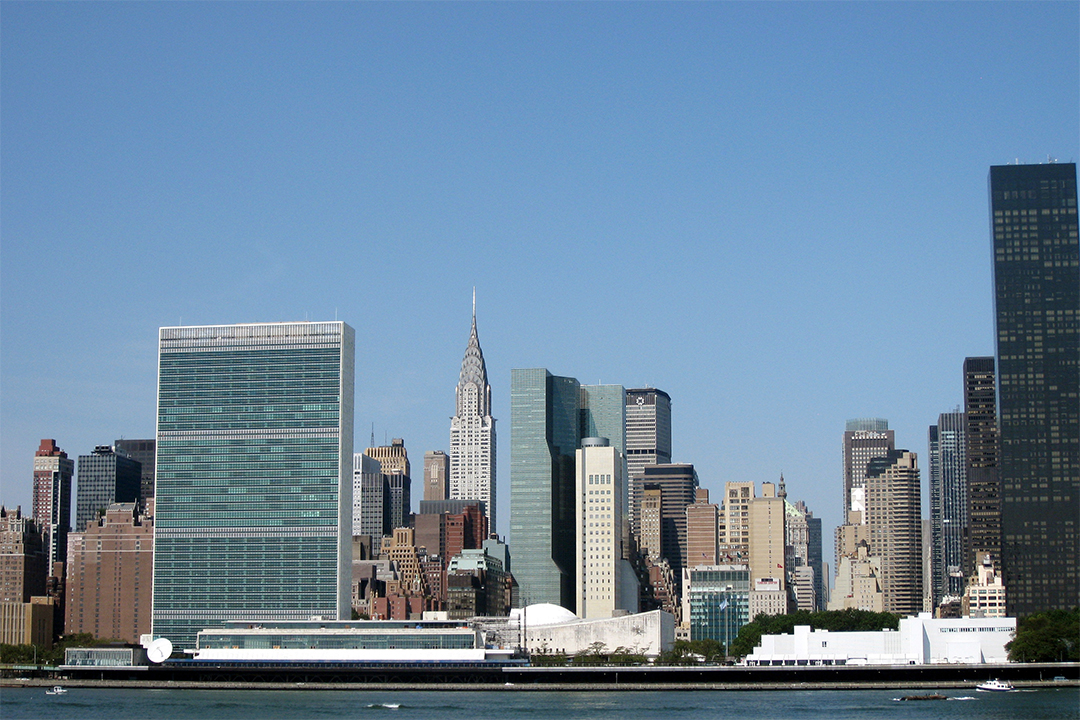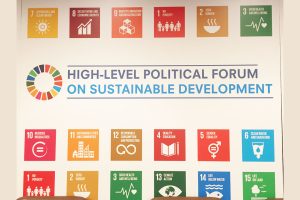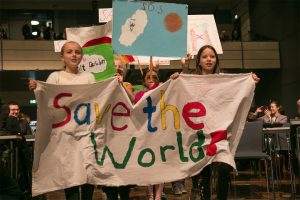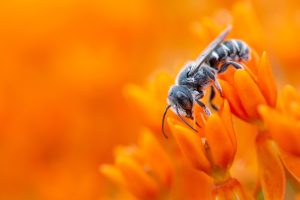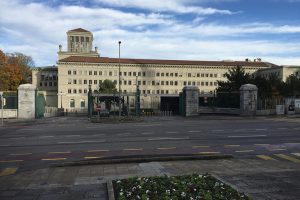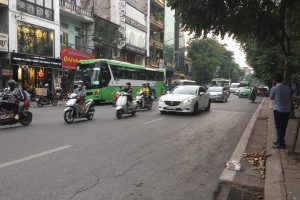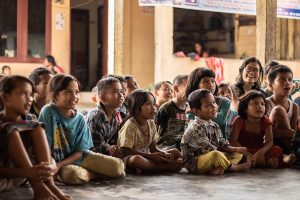An informal virtual briefing on the 2022 High-level Political Forum on Sustainable Development (HLPF) provided an overview of the themes and issues of the July session. The webinar sought to help interested stakeholders “unpack the main messages, connect with like-minded peers, and shape their own advocacy and communications during the high-profile event.”
The webinar took place on 1 July 2022, ahead of this year’s HLPF session, convening in New York, US, from 5-15 July, under the auspices of the UN Economic and Social Council (ECOSOC). It was hosted by the SDG Lab, Cepei, and the International Institute for Sustainable Development (IISD), in partnership with the UN Department of Economic and Social Affairs (DESA) and Action for Sustainable Development.
Trine Schmidt, Policy Advisor, Geneva 2030 Ecosystem, IISD, moderated the event.
Edward Mishaud, Senior Advisor, SDG Lab, delivered opening remarks. He said the webinar provides governments, the UN, and stakeholders with an opportunity to meet ahead of the HLPF to ensure everyone is “on the same page” and aware of opportunities the Forum presents. Noting that the world is falling behind on the SDGs, Mishaud hoped the 2022 HLPF will provide additional momentum and urgency needed to achieve the Goals by 2030.
Participants then took a brief Slido quiz testing their knowledge of the SDGs undergoing in-depth review in 2022, the sessions held at the HLPF in July, the regional distribution of 2022 VNRs, and the September 2023 SDG Summit.
Irena Zubcevic, Chief, Intergovernmental Policy and Review Branch, Office of Intergovernmental Support and Coordination for Sustainable Development, DESA, said the HLPF will hold in-depth reviews of five SDGs – 4 (quality education), 5 (gender equality), 14 (life below water), 15 (life on land), and 17 (partnerships for the Goals). Zubcevic noted that since the HLPF’s theme, ‘Building back better from the coronavirus disease (COVID-19) while advancing the full implementation of the 2030 Agenda for Sustainable Development’ was agreed, the geopolitical context has changed, underscoring the impacts of the war in Ukraine and other ongoing conflicts on food security, energy security, and trade. She hoped discussions at the Forum would reflect this shift, also hoping that the HLPF “will be the place where action is accelerated and solutions are found.”
Zubcevic noted that this year’s HLPF will take place in person, with a “very limited” number of speakers and panelists joining online. She said the sessions will be webcast and livestreamed, with international sign language and closed captioning available.
Zubcevic briefly outlined the official programme of the Forum, and drew attention to a children’s choir “singing for hope, accompanied on the SDG piano.” She said of the 44 countries presenting their Voluntary National Reviews (VNRs) in July, 11 are “first-timers” who will have more time to present. She also noted that most 2022 VNR presenters are from Africa. In contrast with previous years, Zubcevic anticipated more time for interactive discussions on the VNRs.
The unofficial part of the HLPF, Zubcevic explained, includes seven special events, including on SDGs learning, training, and practice, on food security, and on SDG 6 (clean water and sanitation). She said about 250 side events will also be held, and 19 VNR Labs will take place “where countries can delve more in-depth into VNRs.”
Evgeniya Altukhova, Member State Focal Point, SDG Lab, Geneva, reviewed the main findings from the UN Secretary-General’s annual SDG progress report. She said COVID-19 reversed years of progress, and highlighted a three-dimensional food, energy, and financial crisis, compounded by the triple planetary crisis of climate change, pollution, and biodiversity loss. She outlined the state of progress on the five SDGs under review in 2022, and presented “rays of hope” that function as key enablers of sustainable development, including an uptake in data, accelerating digital transformation, and increased finance for a green and sustainable recovery.
Javier Surasky, Cepei, warned that as countries are running out of time “to fulfill the promises they made in 2015,” there has been a decrease of trust in their ability to deliver on the SDGs by 2030. He said the 2023 HLPF will be a critical opportunity to show that the UN is “more than just a place for multilateralism,” but a “brick and mortar representation that sustainable development work is possible.”
Surasky indicated that by 2023, only seven countries will not have presented their VNRs to the HLPF, including the US. He observed that while formally VNRs can be considered a success, there is a need to work on the quality of reporting and to move to cycle reporting and “second-generation VNRs.”
Calling for the 2023 HLPF to send a strong message on 2030 ambition and adopt actions needed to accelerate SDG implementation, Surasky said this year’s Forum “should be the most forward-looking HLPF session to date” to facilitate and “recover the spirit” of the 2030 Agenda.
Drawing on his experience as Sri Lanka’s chief HLPF negotiator in 2016-2017, Uchita de Zoysa, Action for Sustainable Development, stressed the need for stakeholders and the public to have a sense of SDG ownership if the 2030 Agenda is to become a transformative force. He said the HLPF should encourage governments to “engage in an inclusive transformation and recalibrate the context for an honest partnership between the state and non-state actors.” Rather than “just going through the motions,” de Zoysa said the HLPF needs to enable genuine dialogue to strategize together.
De Zoysa questioned the veracity of VNRs, noting that countries, with few exceptions, appear to be presenting a picture “entirely different from what is happening on the ground.” He said any review must be based on a process and a methodology, and recommended that to access progress and achieve true transformation, the HLPF “recognize people and avoid greater fragmentation.” In this context, he highlighted Sri Lanka’s Voluntary People’s Review, Voluntary Sub-national Review, and People’s Scorecard.
During the question-and-answer session, speakers addressed civil society participation in the 2023 SDG Summit and ways to ensure high-quality VNRs that are indicator-based and comprehensively address localization, policy coherence, and the economic, social, and environmental dimensions of sustainable development.
In closing, Lynn Wagner, Senior Director, Tracking Progress Program, and Interim Director, Earth Negotiations Bulletin (ENB), IISD, highlighted resources that can help those interested keep track of the HLPF and “stay in the loop”:
- IISD’s ENB Reporting Service, which will provide daily coverage of the HLPF and publish a summary report at its conclusion;
- IISD’s SDG Knowledge Hub, which tracks daily SDG news and follows the development of the HLPF ministerial declaration;
- HLPF 2022 official website;
- UNTV, which will provide live stream of HLPF meetings and their recordings; and
- A post-HLPF webinar, organized by IISD and partners, debriefing participants on the outcomes.
Among recent global meetings, Wagner highlighted the UN Ocean Conference, the UN High-level Meeting on Road Safety, negotiations towards the post-2020 global biodiversity framework, the 11th World Urban Forum (WUF11), and the World Trade Organization (WTO) Twelfth Ministerial Conference, which resulted in a WTO agreement on SDG 14.6 curbing harmful fisheries subsidies. She said the HLPF will feed into the ‘Transforming Education Summit’ in September and the UN Climate Change Conference in Sharm El-Sheikh, Egypt, in November, and looked forward to “reinvigorating the SDGs.” [Webinar Webpage] [SDG Knowledge Hub Sources]
